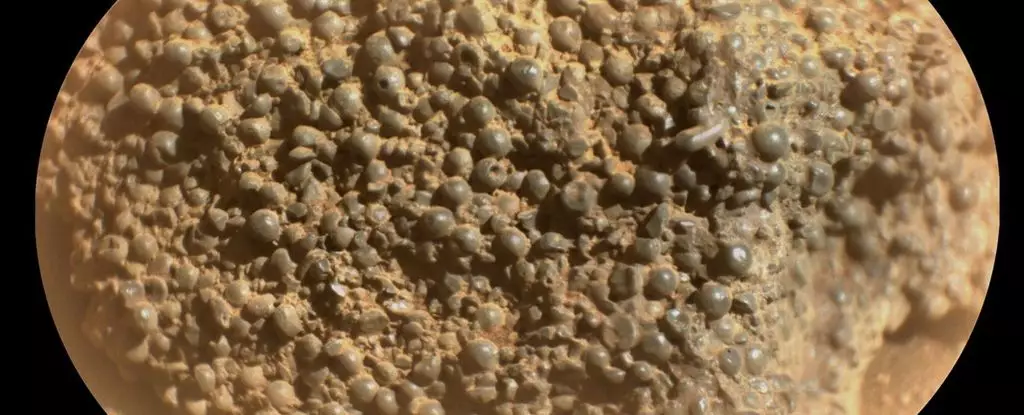Mars has long captivated our imaginations, not only for its status as the most Earth-like planet in our solar system but also for the bizarre geological formations that punctuate its surface. The latest discovery from the Perseverance rover at Broom Point, located on the slopes of Witch Hazel Hill in the Jezero Crater, underscores Mars’s role as a treasure trove of scientific curiosities. Enter St. Pauls Bay, a peculiar rock formation that is stirring excitement among planetary geologists and astrobiologists alike due to its unique appearance and unexplained origins.
The Peculiar Appearance of St. Pauls Bay
St. Pauls Bay consists of tightly-packed, tiny dark gray spherules that resemble clusters of frogspawn—a description both capricious and evocative. Measuring about a millimeter in diameter, these spherical formations are of particular interest because they stand in stark contrast to the surrounding Martian landscape. The term ‘shocking,’ used by researchers to describe this discovery, encapsulates the enthusiasm within the scientific community. To many, it appears that Mars is not merely a barren desert but a place with complex geological processes that we are only beginning to comprehend.
Earthly Analogues and the Quest for Understanding
Back on Earth, similar formations, known as botryoidal, are formed through the crystallization of minerals and are well understood. For instance, minerals like grape agate or hematite exhibit analogous spherical clusters, revealing a formation process rooted in well-established geological principles. However, the situation on Mars may not mirror Earth’s processes. The peculiarities of St. Pauls Bay could indicate a different set of environmental conditions or geological phenomena at play. The existence of such formations in an alien environment challenges our preconceived notions about how geology operates beyond our planet.
The Challenges of Interpretation
What complicates the understanding of St. Pauls Bay even further is its classification as a float rock. This designation suggests that the rock has been moved from its original location, thereby obscuring the context essential for deciphering its formation mechanism. Without an understanding of where the rock originated, scientists cannot ascertain whether its peculiar composition arose from geological activity connected to volcanic forces or aqueous environments, both of which have been posited as sources for similar spherical formations found on Mars.
A Glimpse into the Future of Martian Exploration
Recent orbital observations hint at a dark layer of rock nearby, which may serve as a source for St. Pauls Bay. As the Perseverance rover maneuvers closer to this intriguing site, it offers a tantalizing promise: the potential to uncover new insights into Mars’s geological history. Such discoveries may unravel the delicate connections between fire and water— essential elements in the ongoing quest to understand Mars’s past habitability. As exploration continues, the universe steadily reveals itself as a complex tapestry rich with untold stories, waiting to be uncovered by the intrepid explorers of human ingenuity and technology.

